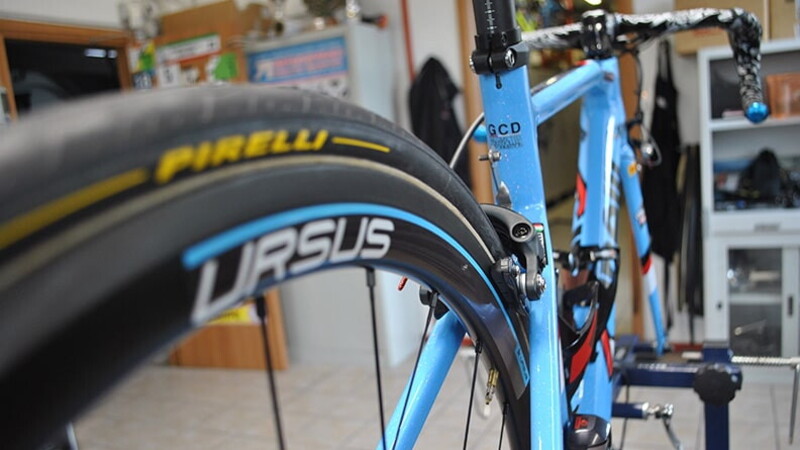They are the point of contact with the road, and the cyclist's performance, comfort and safety depend, to a large extent, on their features. This is where tyres produced by Pirelli for both professional and amateur cyclists stand apart. Indeed, we are talking about high performance and durable tyres for mountain bikes, gravel, road racing and urban settings. Stefano Casiraghi, the Colpack Ballan Team's mechanic, will help you choose the best tyres to suit your needs. He will also provide some useful tips on care and maintenance.

Choice
"Start by looking for a type of tyre that is suitable for the intended use. If you participate in triathlon races, for instance, you should choose tubular tyres for smooth riding." For a conventional amateur cyclist who enjoys eating up the kilometres, the Colpack Ballan Team's mechanic recommends ignoring grip and sliding to, instead, focus on a more structured tyre, with tread and canvas reinforcements. Anyhow, all tyre manufacturers usually specify the best use for the various types of tyres, and what they guarantee in terms of performance, grip and durability.You can even rely on that information as guidance when making your choice.
Pressure
Check it whenever you use the bicycle. It clearly depends on both the road surface and the cyclist's body weight. Pressure calibration is crucial for optimal performance. Pirelli has drawn up a table with the recommended pressure based on body weight. Tyres need not be inflated "to their maximum capacity". Indeed this often proves to be counterproductive. Ensure the right degree of inflation that does not canceI the cushioning effect of tyres, which is useful when you come across potholes and a rough road surface. "All you need to inflate them is a 12 bar air compressor pump but 8 or 8.5 bar will usually suffice once the tyres have been inflated."
Flat tyres
Even in case of a flat tyre, the best approach will depend on the type of tyre mounted on your bicycle. "For tubular tyres, you can use a pressurised can of puncture sealant foam. It will get you home, if the hole is not too large." The same applies to tubeless tyres, which offer the additional option of inserting a tube. Instead, with conventional tyres, you have to replace the tube by removing the punctured one after lifting the rim with the tyre lever. Once you have inserted the new one, inflate it with the dedicated tap and CO2 can. These tools are not bulky, and you can easily take them along when riding.





